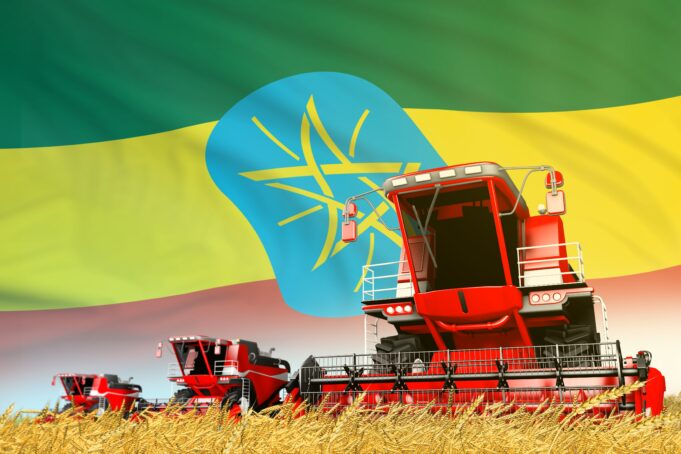[Editor’s note: According to a September 11, 2024, article in the Ethiopia Observer, Dr. Tadesse Daba, lead researcher and national coordinator at the Open Forum on Agricultural Biotechnology (OFAB-Eth) under the Ethiopian Institute of Agricultural Research, confirms that Genetically Modified wheat has never been imported into the country.
However, the article notes there are concerns this could change. The Honorable Minister Louis Farrakhan warned about the dangers of GMOs (Genetically Modified Organisms) in agriculture in several episodes of his 2013, 58-week lecture series, “The Time and What Must Be Done.” Visit media.noi.org to view this series in its entirety.]
During a recent press briefing, Ethiopian Minister of Government Communication Service (GCS), Legesse Tulu, announced that among Ethiopia’s agricultural achievements in recent years is that the country has become Africa’s leading wheat producer, marking a historic milestone in its agricultural development. The briefing was held Nov. 16.

The Horn of Africa country is the largest wheat producer on the continent, accounting for at least 65 percent of the total wheat production in sub-Saharan Africa, noted CIMMYT, which is Spanish for International Maize and Wheat Improvement Center. CIMMYT is a non-profit organization that conducts research and training to improve maize and wheat production.
During the summer, a report titled “New heat-tolerant wheat varieties prove fruitful for Ethiopia’s irrigated lowlands” noted that new strains by the “ADAPT-Wheat project will expand Ethiopia’s total farming area and wheat production by opening up lowland farming opportunities.”
The Adaption, Demonstration and Piloting of Wheat Technologies (ADAPT) for irrigated Lowlands of Ethiopia project “supports research centers to identify new technologies suitable for target planting areas through adaptation and development, which are then released to farmers,” the report said.
So far, “several bread and durum wheat varieties, and agronomic practices, have been recommended for target areas through adaptation and demonstration. The seeds of adapted varieties have been multiplied and distributed to small-scale farmers in a cluster approach on seed loan basis.”
Beginning in 2021, CIMMYT and the Ethiopian Institute of Agricultural Research (EIAR), in a joint venture, supported small-scale farming households to improve yields. Wheat and its production is one of the most widely cultivated and consumed cereal grains on the planet serving as a staple food for a large portion of the world’s population.
Wheat is rich in carbohydrates, provides a substantial energy source, and contains essential nutrients such as protein, vitamins, and minerals. Wheat is versatile and can be processed into various food products, including bread, pasta, and pastries, noted Africaviewfacts.com.
Wheat stands alone in terms of per capita consumption. Wheat represents nearly 30 percent of Africa’s cereal consumption, according to sciencedirect.com in a report published in Global Food Security titled “Pathways to wheat self-sufficiency in Africa.”
The report claims cereals represent 50 percent of energy sources in the daily food consumption in Africa. Of those cereals, wheat is number one per capita in consumption and represents nearly one-third of the cereal consumption in the continent.
This increases to “63 percent in Northern Africa, where nations heavily depend on wheat consumption for their daily calorie intake, and where most of the wheat is imported,” the report noted.
“Though the per capita consumption of maize is the highest among the cereals consumed in Eastern and Southern Africa, the role of wheat in these regions is also substantial, i.e., between 17 and 32 percent of the total cereal consumption.”
With the spike in wheat prices in 2008, countries like Ethiopia, Tanzania, and Zambia expanded areas under wheat cultivation, resulting in a tangible increase in wheat production in 2009. The 2022 invasion of Ukraine by Russia, and both countries being major wheat exporters, aggravated input prices and food security worldwide, including in Africa.
“This calls for designing and implementing initiatives in response to the shortages of wheat stocks in the world market and reducing wheat import bills of nations in Africa through expanding domestic wheat production,” explained Global Food Security.
Assisting Ethiopia to increase its wheat production is the African Development Bank. According to Dr. Abdul Kamara, deputy director general for East Africa, African Development Bank Group.
The CREW (Climate Resilient Wheat Value Chain Development) Project will complement the bank’s current investments of about $1.2 billion in Ethiopia, across the key sectors of energy, transport, agriculture, water and sanitation, and economic governance, reported world-grain.com.
“It is designed to scale up and sustain the impressive results of the Wheat Revolution in Ethiopia,” Kamara said, according to world-grain.com. “Following the successful and nationwide deployment of heat-tolerant wheat varieties, irrigated wheat areas rapidly expanded, and wheat yields increased on average from 2 to 4 tons per hectare.
The bank is proud to be a leading financier in these critical areas seeking to accelerate Ethiopia’s economic transformation and development,” Kamara was quoted as saying.
During Minister Tulu’s press briefing, he noted ongoing efforts to revitalize and modernize Ethiopia’s agriculture sector. He added that the reforms in the agriculture sector are designed to boost productivity and ensure food security.
Follow @JehronMuhammad on X













